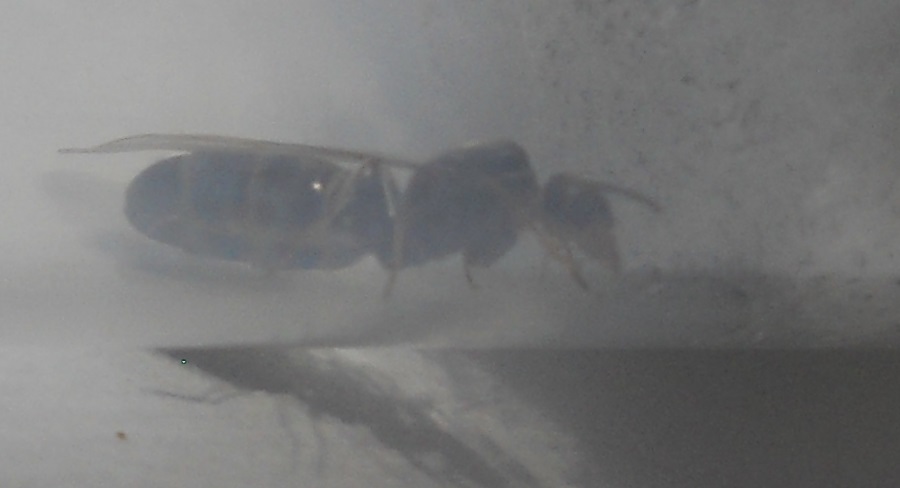2. Date of collection: 8/02/2014
3. Habitat of collection: Sub-Urban
4. Length (from head to gaster): 7mm.
5. Color, hue, pattern and texture: Black with thin whitish stripes on gaster.


Edited by Gregory2455, August 12 2014 - 12:33 AM.


Best Answer dspdrew , August 11 2014 - 11:32 PM
I think this might be Dorymyrmex insanus.
Go to the full post


Edited by Gregory2455, August 12 2014 - 12:33 AM.
I think this might be Dorymyrmex insanus.
I have another one of these exact looking ones which is about 2mm smaller, did you say that there is a large variation in these queens? You mentioned one a lot larger you caught in the desert some time back.
I will call it Dorymyrmex insanus for now, until I can look closer at it.
Are its mandibles redish in color?
A little bit.
I actually want to call that so called smaller one, one of your Brachyrmex sp.1. Size, shape, look, it just about all matches up.
Yeah it does look like Brachymyrmex actually. The size difference between the two can be quite small.
The larger one has reddish mandibles, and the smaller one does not, and it also looks a bit different. I will call the larger one Dorymyrmex insanus and the smaller one a Brachymyrmex sp. I will definitely be able to ID them once they get workers.
0 members, 0 guests, 0 anonymous users